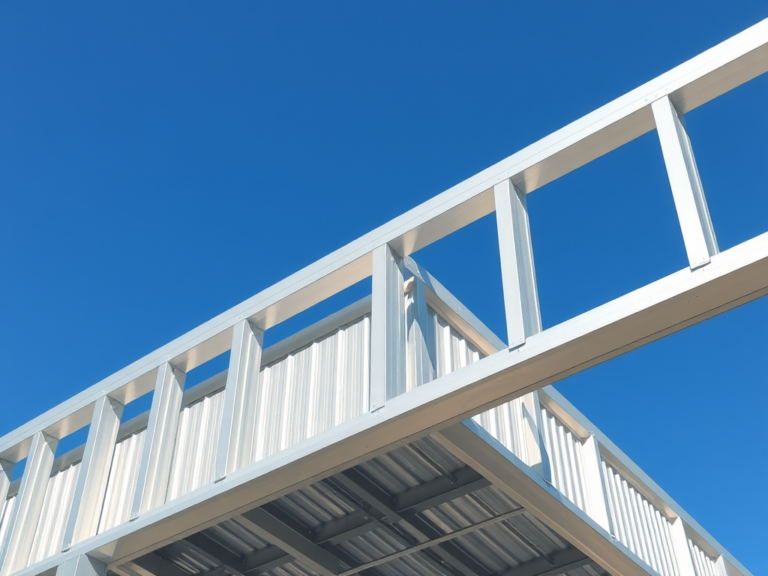When it comes to building structures that stand the test of time, materials play a pivotal role. Imagine a material that’s as light as air yet as tough as steel—able to withstand corrosion, wear, and the challenges of extreme conditions. That’s the beauty of aluminum framing. While steel and wood have been popular choices for industrial setups, aluminum framing is rapidly becoming the preferred option due to its impressive combination of durability and low maintenance.
Superior Resistance to Corrosion and Environmental Wear Compared to Steel and Wood
Aluminum’s ability to resist corrosion is one of its standout features. Unlike steel, which is prone to rusting when exposed to moisture or harsh environments, aluminum forms a natural oxide layer that protects it from deterioration. This means that in industrial settings where exposure to water, chemicals, and weather conditions is common, aluminum framing remains intact and reliable for much longer.
Wood, on the other hand, is vulnerable to rot, pests, and moisture, which can compromise its structural integrity over time. When compared to these traditional materials, aluminum’s resilience to corrosion makes it an excellent choice for structures exposed to the elements, such as warehouses, factories, and outdoor installations. It’s not just about longevity; it’s about ensuring that the structure remains safe and functional with minimal wear.
Lightweight yet Incredibly Strong, Offering Both Performance and Ease of Handling
Aluminum framing is the perfect blend of strength and lightweight design. At first glance, it may seem like a lightweight material wouldn’t stand up to heavy-duty use. However, aluminum has an excellent strength-to-weight ratio, meaning it can carry substantial loads while still being easy to handle during installation. This characteristic significantly reduces the cost and complexity of transportation and assembly.
In industrial environments where large-scale operations demand efficiency, handling bulky steel or wooden frames can slow things down. With aluminum framing, workers can move and install components with greater ease, cutting down on labor time. Even though it’s lighter, the material does not sacrifice strength. It’s a material that delivers on both performance and practicality, making it a smart choice for industries looking to optimize operations.
Exceptional Strength-to-weight Ratio Leading to More Durable and Efficient Structures
One of the most impressive qualities of aluminum framing is its superior strength-to-weight ratio. This means that, despite being significantly lighter than steel or wood, aluminum can support as much or even more weight without bending, breaking, or warping. For industrial applications where structural integrity is crucial, this ensures that aluminum framing can support heavy loads without compromising the overall stability of the structure.
Additionally, the durability of aluminum framing translates into more efficient designs. Engineers can use less material to achieve the same strength, leading to reduced overall costs while still maintaining a high-performance structure. In industries where both longevity and cost-effectiveness are critical, the combination of light weight and heavy-duty strength provided by aluminum is a game changer.
Minimal Expansion and Contraction Under Temperature Fluctuations, Ensuring Consistent Performance
Temperature fluctuations can wreak havoc on building materials, causing them to expand and contract. This can lead to structural instability, gaps, and an overall compromised performance over time. Aluminum framing, however, exhibits minimal expansion and contraction when temperatures change. This characteristic is especially important in environments with wide temperature variations, such as factories or outdoor setups.
In contrast, materials like steel and wood are more susceptible to these temperature-driven changes, which can result in misalignments, cracks, or warping. With aluminum, the material maintains its shape and structure regardless of temperature shifts, ensuring that your setup remains solid and reliable over the years. This consistency is a significant advantage when aiming for long-term durability.
Long-lasting Finish That Resists Fading, Even in Harsh Outdoor Conditions
Industrial structures often endure exposure to the sun, rain, and other environmental stressors that can cause wear and fading over time. Aluminum framing stands out here, as it retains its finish much longer than other materials. The natural oxide layer that forms on aluminum not only protects it from corrosion but also helps maintain its aesthetic appeal.
Unlike steel, which can rust and look worn down after extended exposure, or wood, which can discolor or rot, aluminum framing stays visually appealing for longer. Its resistance to fading and wear makes it ideal for both functional and aesthetic purposes. Whether it’s a factory on a sunny rooftop or a storage unit in a rainy climate, aluminum framing won’t require the frequent touch-ups or refinishing that other materials need, saving both time and money.
Lower Maintenance Requirements Due to Aluminum’s Natural Resilience
One of the most significant advantages of aluminum framing is the minimal maintenance required to keep it in top shape. Unlike steel, which demands regular treatment to prevent rust, or wood, which needs periodic sealing and protection from pests, aluminum can often go years without requiring any major upkeep.
This low-maintenance nature is particularly beneficial in industrial environments where time and resources are valuable. The resilience of aluminum means fewer repairs, replacements, or ongoing costs associated with keeping the structure in good condition. It’s an investment that pays off over time, reducing the need for maintenance teams and allowing businesses to allocate their resources elsewhere.



